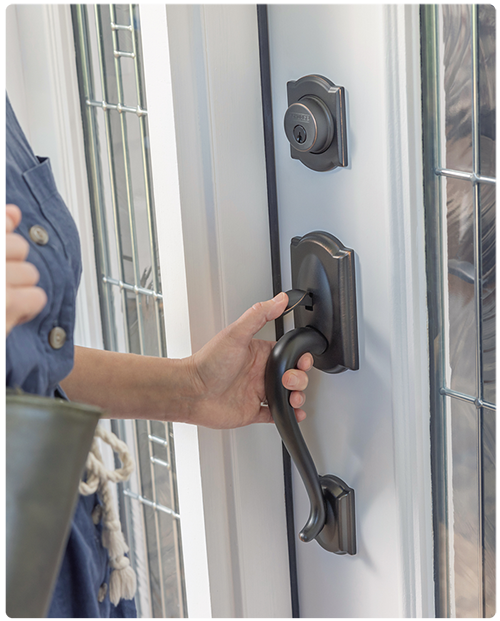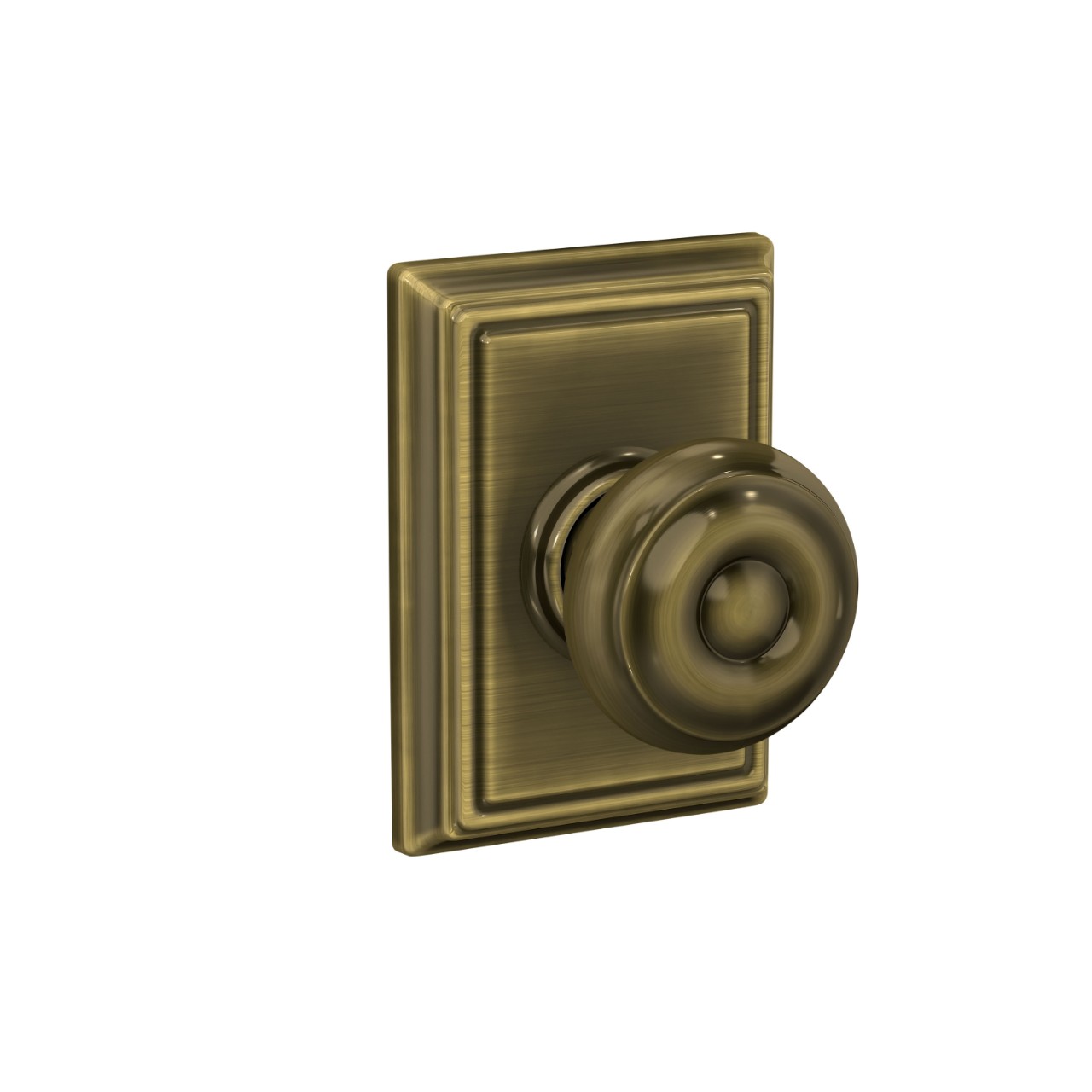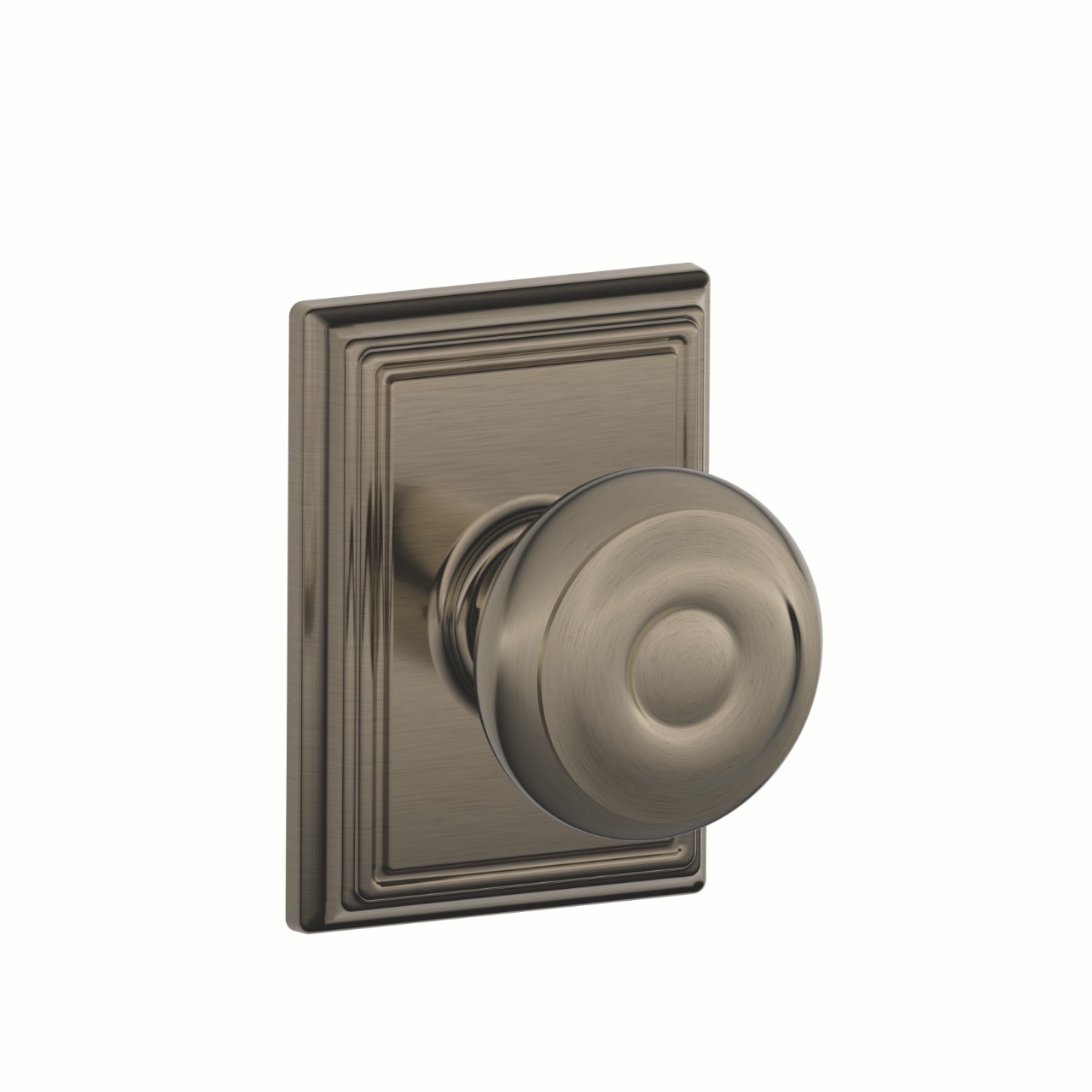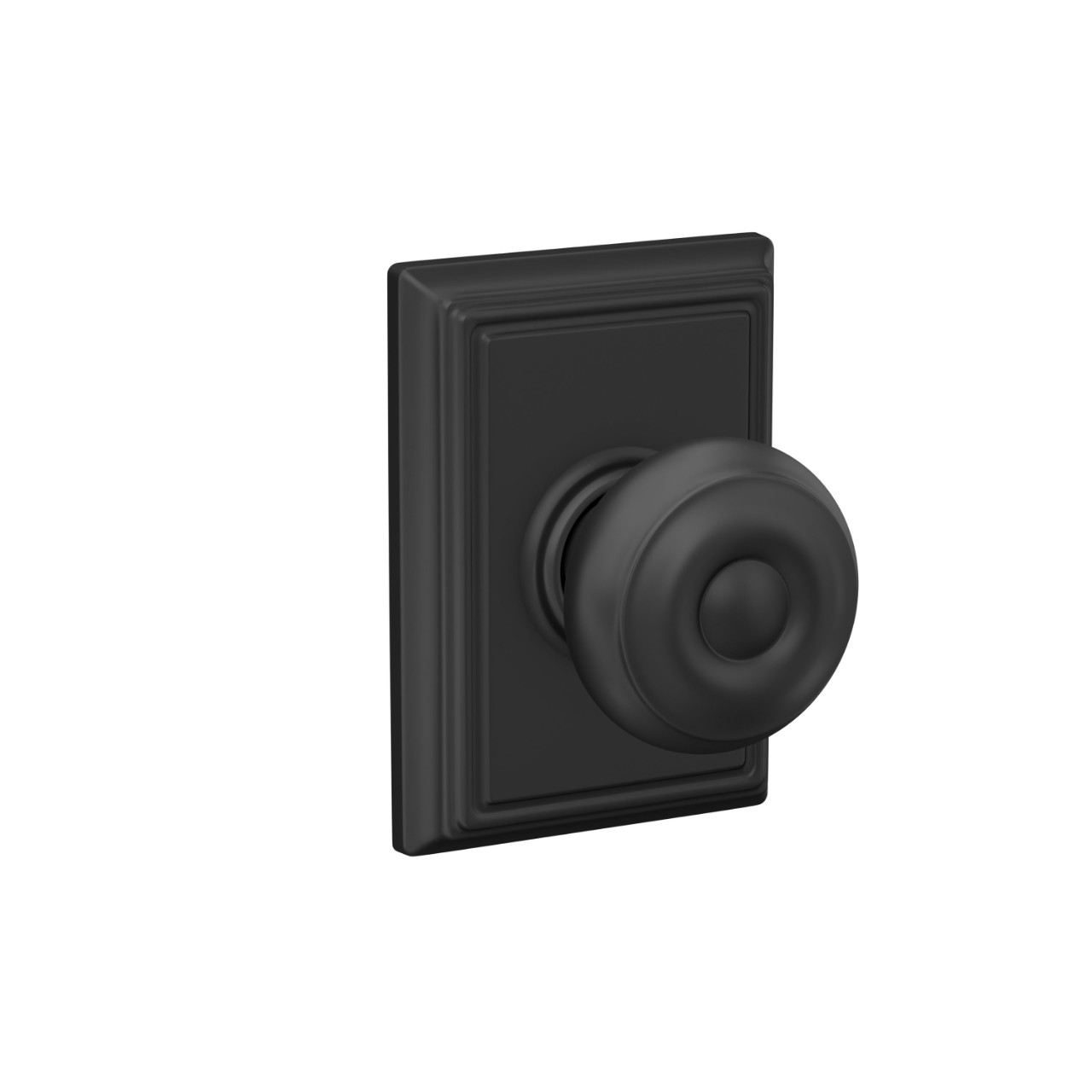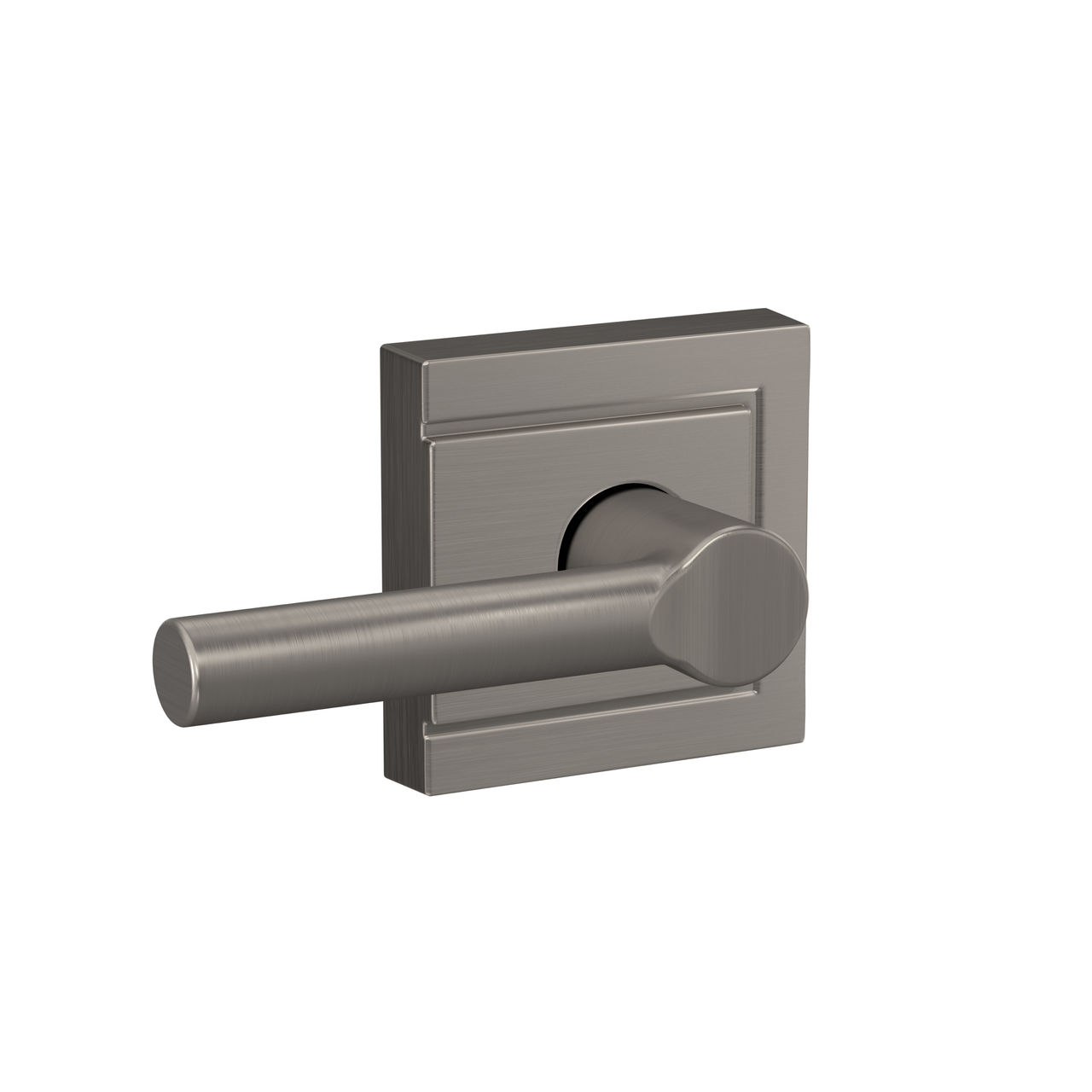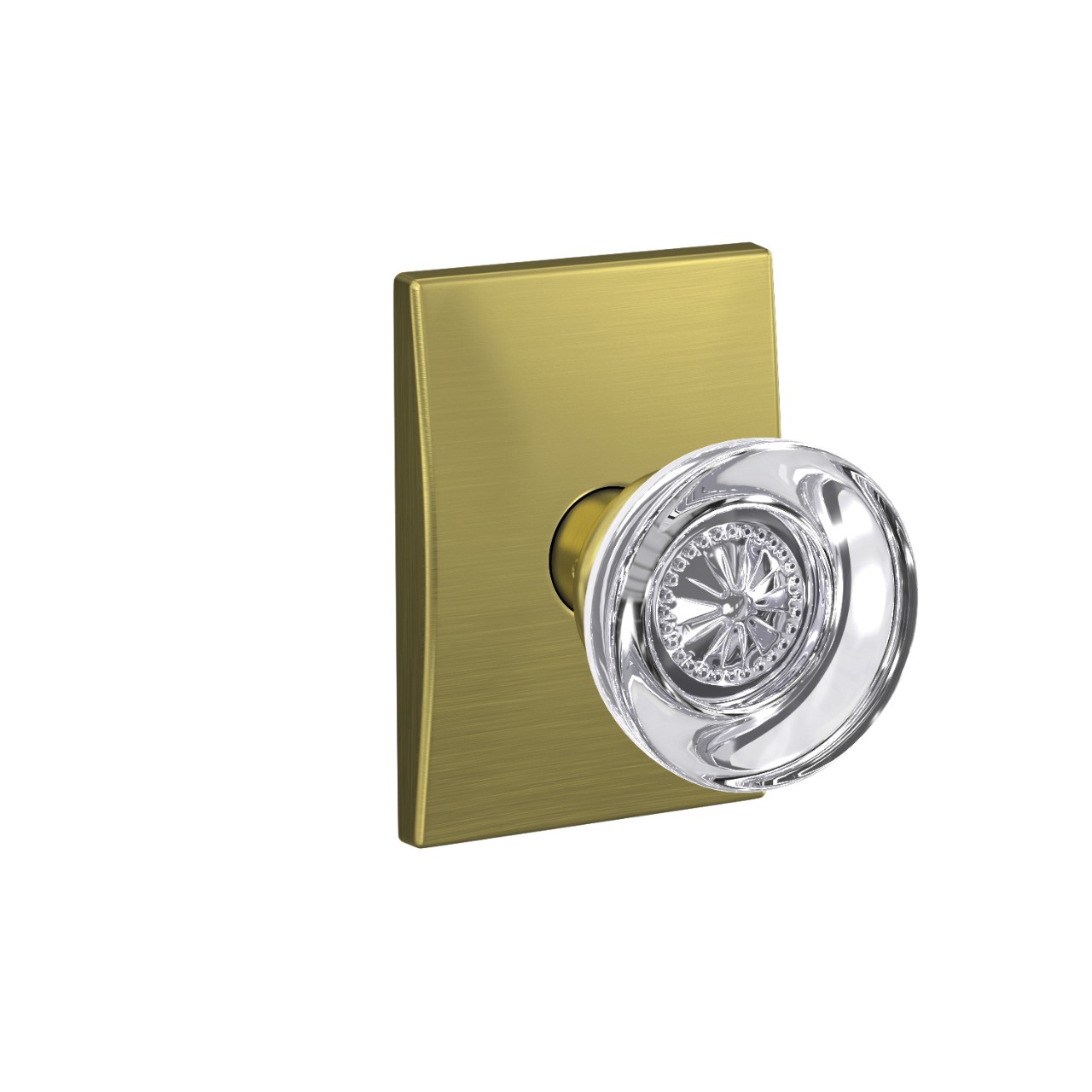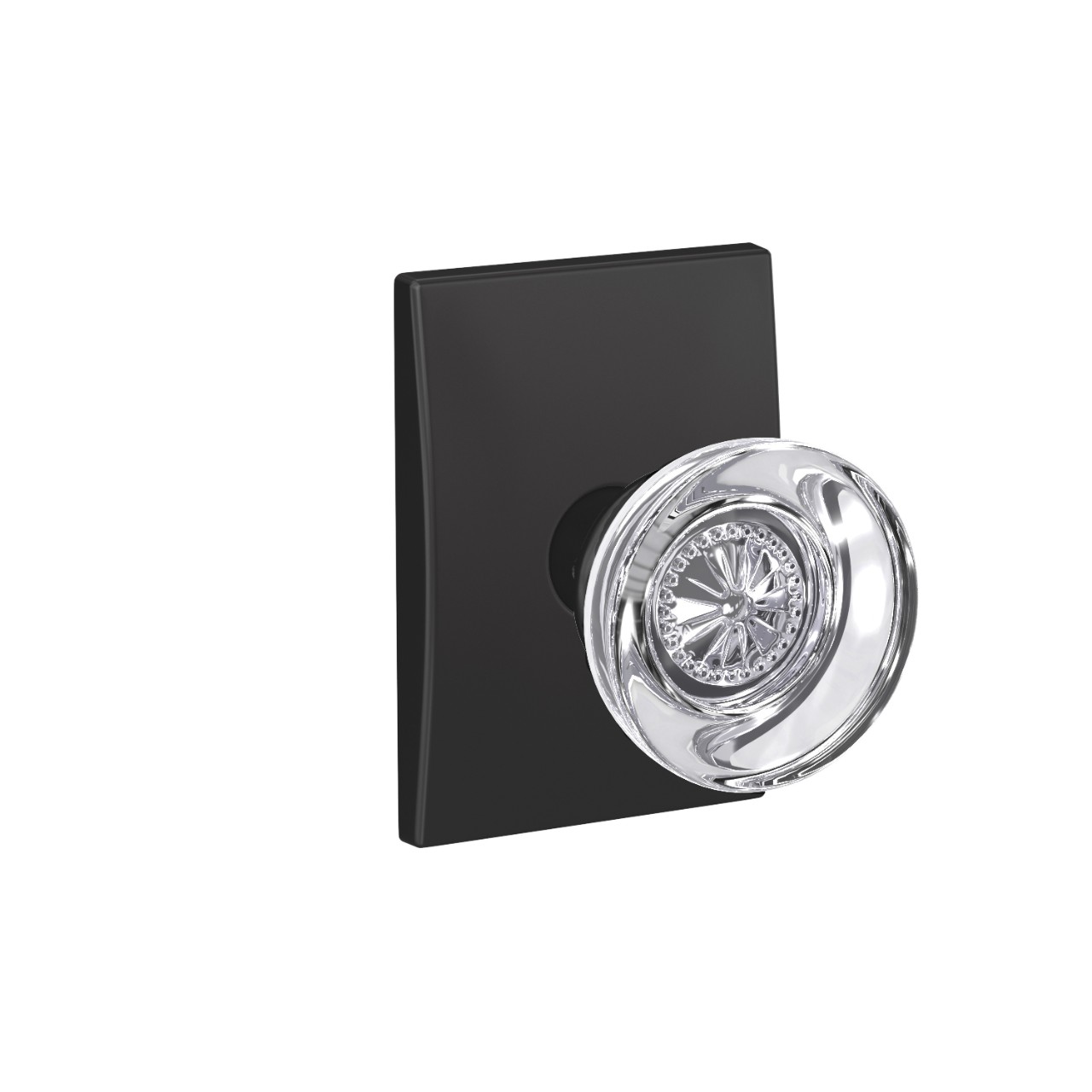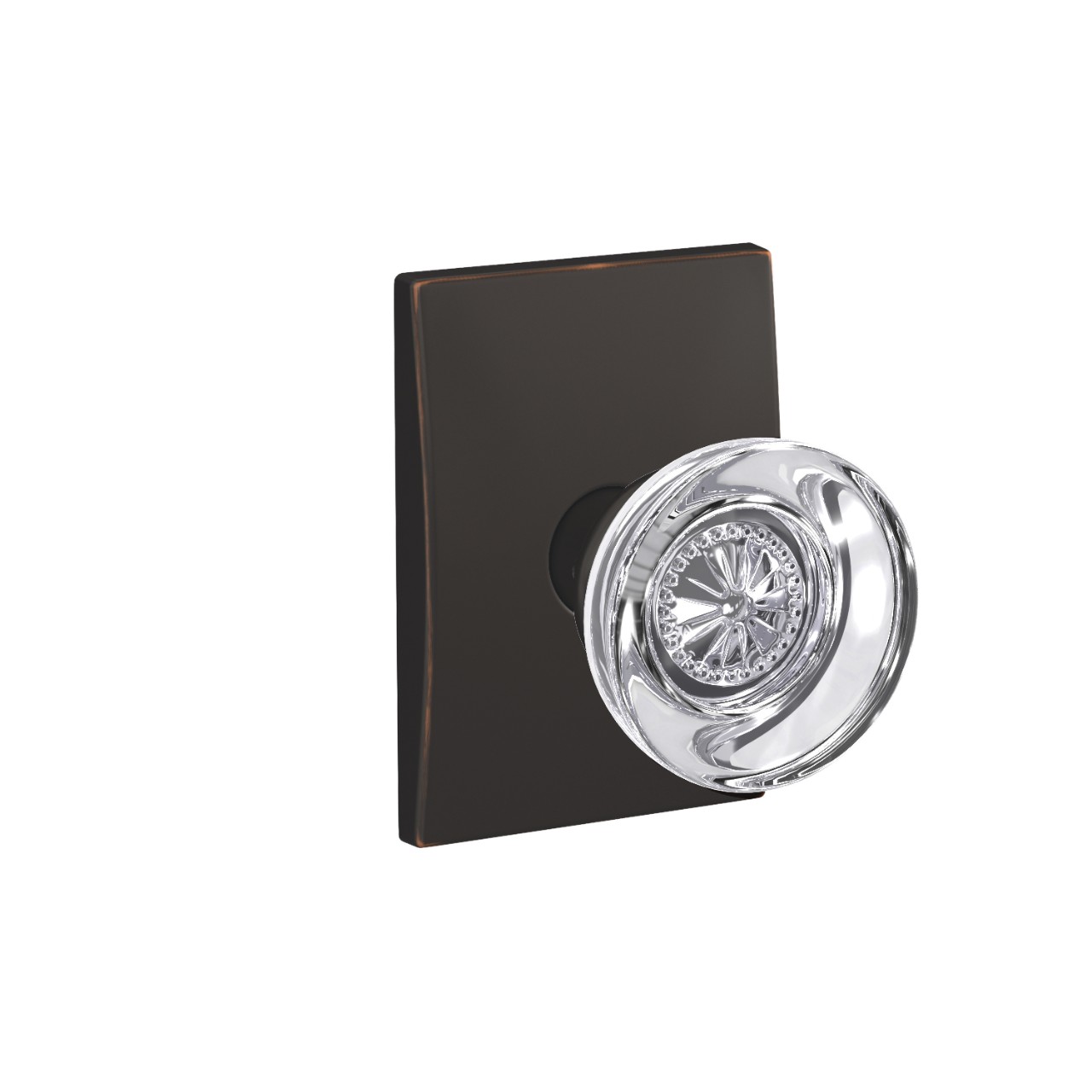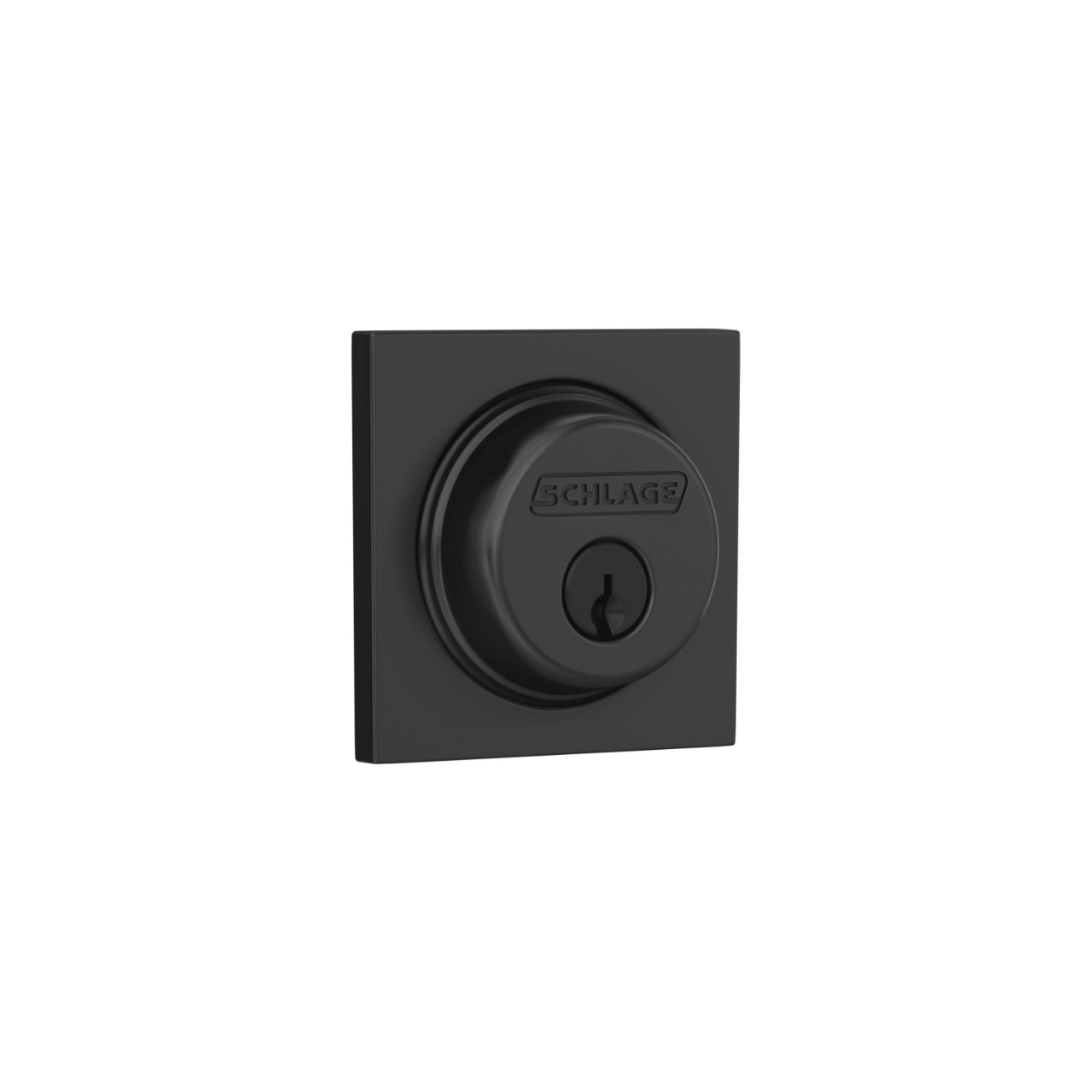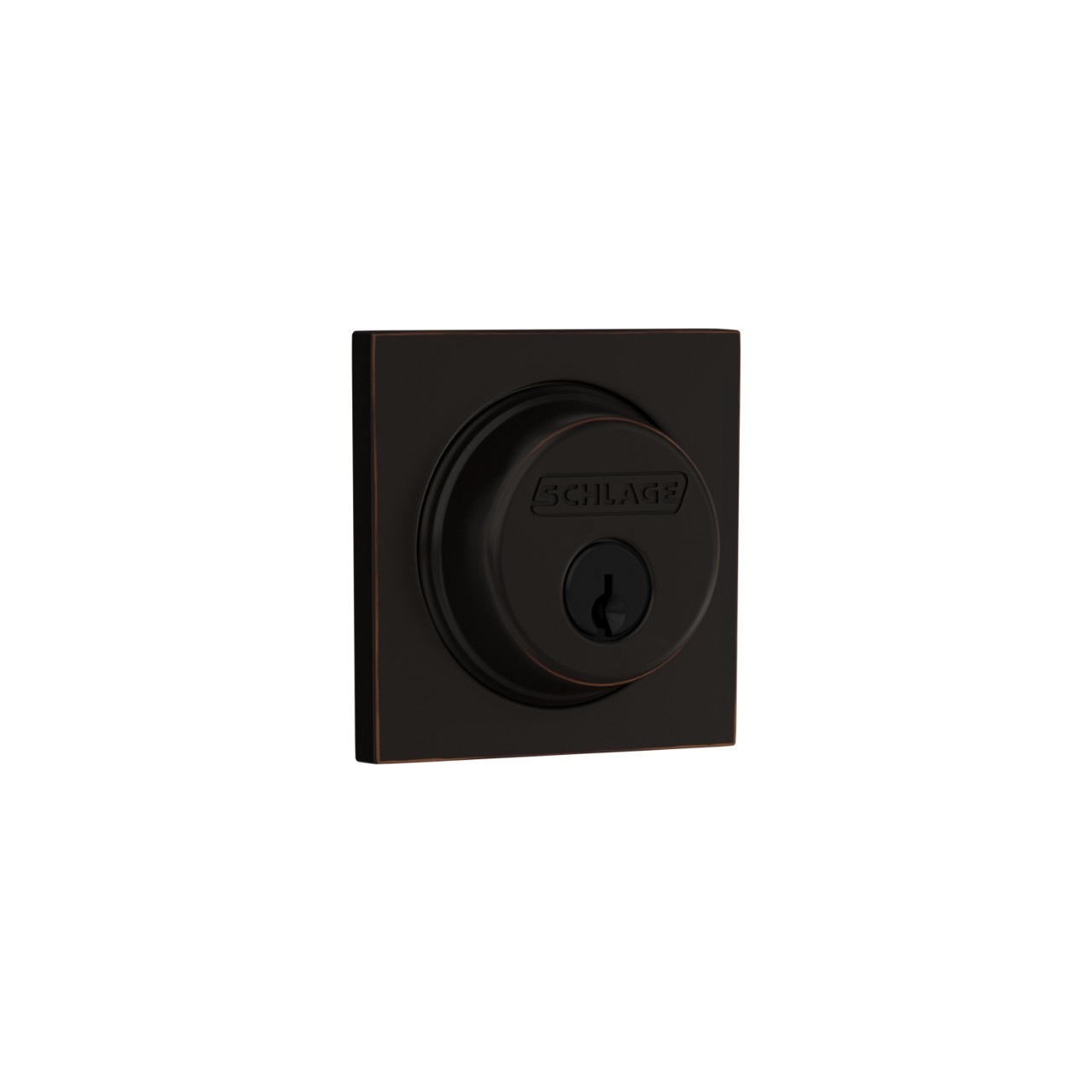

Whether exploring the world of door hardware online at websites like schlage.ca or visiting your local home improvement store to purchase door hardware that meets your specs for security, performance and style, it helps to be able to talk the talk.
From backset to bore, strike plate to spindle, we’d like to help you understand some of the more common terminology and help unlock the sometimes mysterious and occasionally confusing world of door hardware. It’s actually easier than it sounds once you get the hang of it, and soon you’ll be able to help you impress your friends with your newly acquired knowledge of parts of a door lock. We’ll also provide some practical understanding of the various door lock and security options available to you.
Let’s start with the parts of the lock you’ll typically find in the box when you purchase door hardware from Schlage.

Parts of a door lock
Chassis:
Like your car’s engine under the hood, this is the internal body of the lock, the unseen working mechanisms inside the door. Among other things, the chassis determines if your lock is Privacy/Bed & Bath, Passage/Hall & Closet or Combined Interior. Visit schlage.ca to see a variety of mechanical and electronic options including the latest smart locks.
Trim:
Sometimes called a rose, the trim is a decorative plate attached to the door under the knob or lever. Depending on the lock you choose, there are a number of available trim styles and finishes to meet your specific preferences and that fit the uniqueness of your home’s look and style.
Deadbolt:
One of the strongest methods of securing a door, deadbolts are operated only using a key from the exterior or thumbturn from the interior. The deadbolt is typically installed on exterior doors above a knob, lever or grip for a handleset.
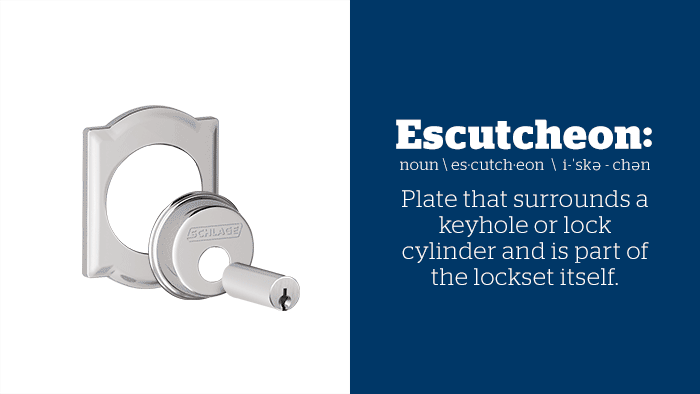
Escutcheon:
This refers to any plate, including trim and handleset plates, that surrounds a keyhole or lock. It protects the lock cylinder from being drilled out, providing you with additional security, and protects the surrounding area from being scratched by a key.
Faceplate
A metal plate on the edge of the door, next to the latch or deadbolt, the faceplate protects the lock from wear and tear. It may have rounded corners or be a circular drive-in faceplate. The shape of the faceplate used during installation depends on your door’s preparation.
Backplate:
Used with a rounded corner faceplate, the backplate is installed with the latch so that it is positioned between the faceplate and the latch bore (the hole where your latch enters the door).
Latch bolt:
Sometimes abbreviated as latch, this is the type of lock that has a beveled, spring- operated bolt that engages when you close the door. If you’ve ever accidentally locked yourself out of your house or a hotel room, you know this type well.
Spindle:
The spindle is the bar that connects knobs or levers through the door and operates the lock mechanism.
Strike plate:
Similar to a faceplate, the strike plate is a metal plate that is affixed to the doorjamb and has a hole (or holes) that accommodate the lock bolt. It is not only decorative. The strike plate protects the doorjamb and adds security to the opening.
Other door hardware terms
Beyond parts, there are a few more terms you might find helpful when it comes to purchasing and installing your door hardware.
Backset:
The backset is the distance from the edge of the door to the center line of the prepared cross bore hole drilled to install most locks. With all installations, there are minimum and maximum measurements required for your lock to be compatible. Schlage locks are designed to fit all standard doors with a 2-3/8” or 2-3/4” backset.
Bore holes:
Bore holes are the holes in the door that house your door hardware and allow it to be installed. The cross bore is the main hole drilled into the face of the door where the body of the lock (chassis) is installed. The latch bore, also known as the edge bore, is the hole drilled from the side of the door into the cross bore to allow the latch of the lock to be installed and to accommodate the sliding of the deadbolt. The diameter of the latch bore is generally 1” to accommodate bolts from either mechanical or electronic locksets.
Handing:
Handing is a term used to indicate how a door swings. This is important to know when choosing a compatible lock for your use. A left-handed lever has the door hinges located on the left side as you look at the door’s exterior. A right-handed lever has the door hinges located on the right side of the door as you look at it from the outside. For more information, check out our blog post on understanding lever and door handing.
Unlock more ideas
Never miss a beat - get the latest product updates, style tips and DIY tutorials sent right to your inbox.
